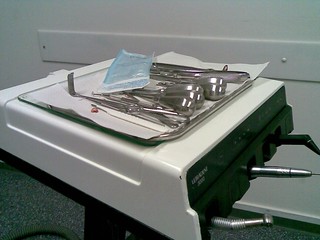Dental implants are tooth replacements that are mounted on metal posts and surgically implanted into the jawbone. While dentures and bridges can be loose and ill-fitting, dental implants are much more stable, feel better, look better and will last a lifetime. Whether or not you’re a candidate for dental implants depends on whether or not your gums are healthy and how much bone you have available to anchor the implant.
There are two different types of dental implants.
• Endosteal dental implant: This involves surgically inserting an implant into the patient’s jawbone over the course of three procedures. The first involves inserting the implant into the jawbone. The second involves connecting a post to the implant after the gum tissue has healed around it. The third and final procedure involves attaching an artificial tooth (or teeth) to the post. This is the most common form of dental implant.
• Subperiosteal dental implant: This type of procedure involves fitting a metal frame onto the jawbone. As the gum around the plate heals, the frame becomes permanently affixed to the bone. Posts are then attached to the frame, and artificial teeth are then attached to the posts.
While there’s no doubt that dental implants are, in many ways, much more desirable than either dentures or bridges, implants can also be much more expensive. To find out if you’re a good candidate for dental implants, and for more information about possible disadvantages and the costs involved, visit your dentist. He or she can provide all the information you need to determine whether dental implants are right for you.
Source: http://www.colgate.com/app/CP/US/EN/OC/Information/Articles/Oral-and-Dental-Health-Basics/Checkups-and-Dental-Procedures/Dentures-and-Dental-Implants/article/What-are-Dental-Implants.cvsp
Extracted Wisdom Tooth (Dentist’s Office in Munich) (Handycam) (http://www.flickr.com/photos/wolkenkratzer/3451977163/) / CC BY 2.0 (http://creativecommons.org/licenses/by/2.0/)

